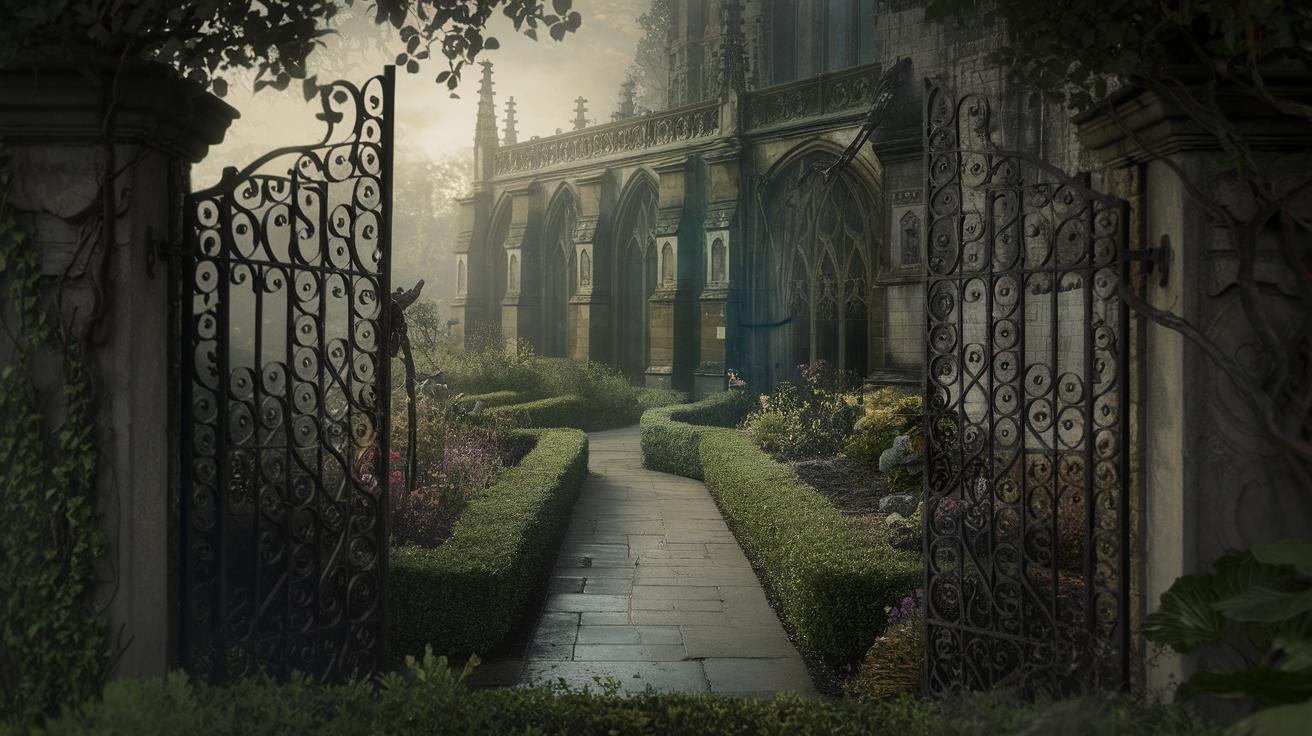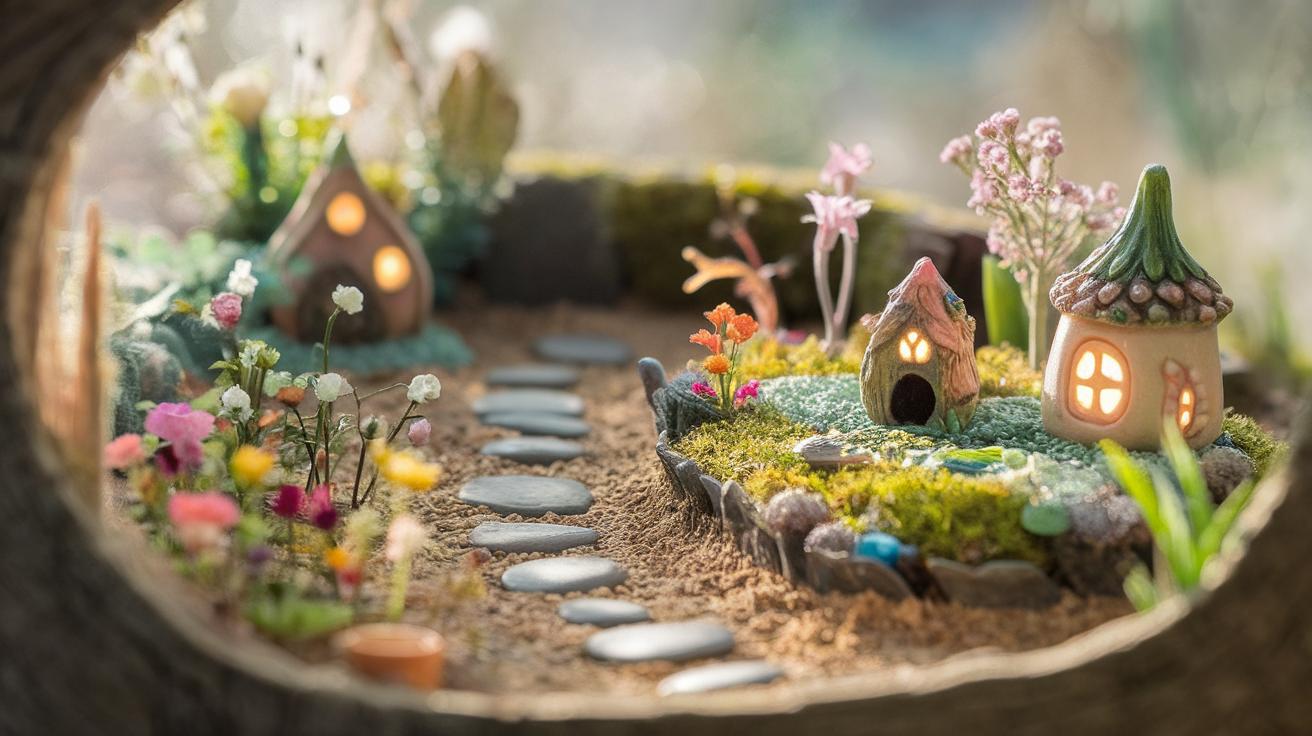Introduction
The concept of a Gothic garden is a celebration of the darker aspects of nature, where beauty intertwines with the macabre. Rooted in the traditions of Gothic literature and architecture, these gardens evoke an atmosphere rich with mystery and deep emotion, making them ideal for those drawn to dark romanticism. Incorporating elements like shadowy foliage, intricate stonework, and forgotten paths, a Gothic garden invites exploration and contemplation. The design principles often reflect the imbalance between life and death, echoing the sentiments of Gothic fiction which emphasizes themes of despair and haunting beauty.
Through this article, we embark on a journey to discover how to craft your own enchanting Gothic garden. We will delve into the essential elements, color palettes, plant choices, and architectural features that contribute to this unique style. The interplay of light and dark, coupled with the evocative nature of selected flora and design choices, allows for a garden that not only serves as a space for reflection but also narrates a story steeped in intrigue and passion. Whether for personal enjoyment or as an inviting space for others, developing an enchanting Gothic garden can provide a sense of solace amidst the chaos of everyday life.
Defining the Gothic Garden Aesthetic Unraveling the Darkness
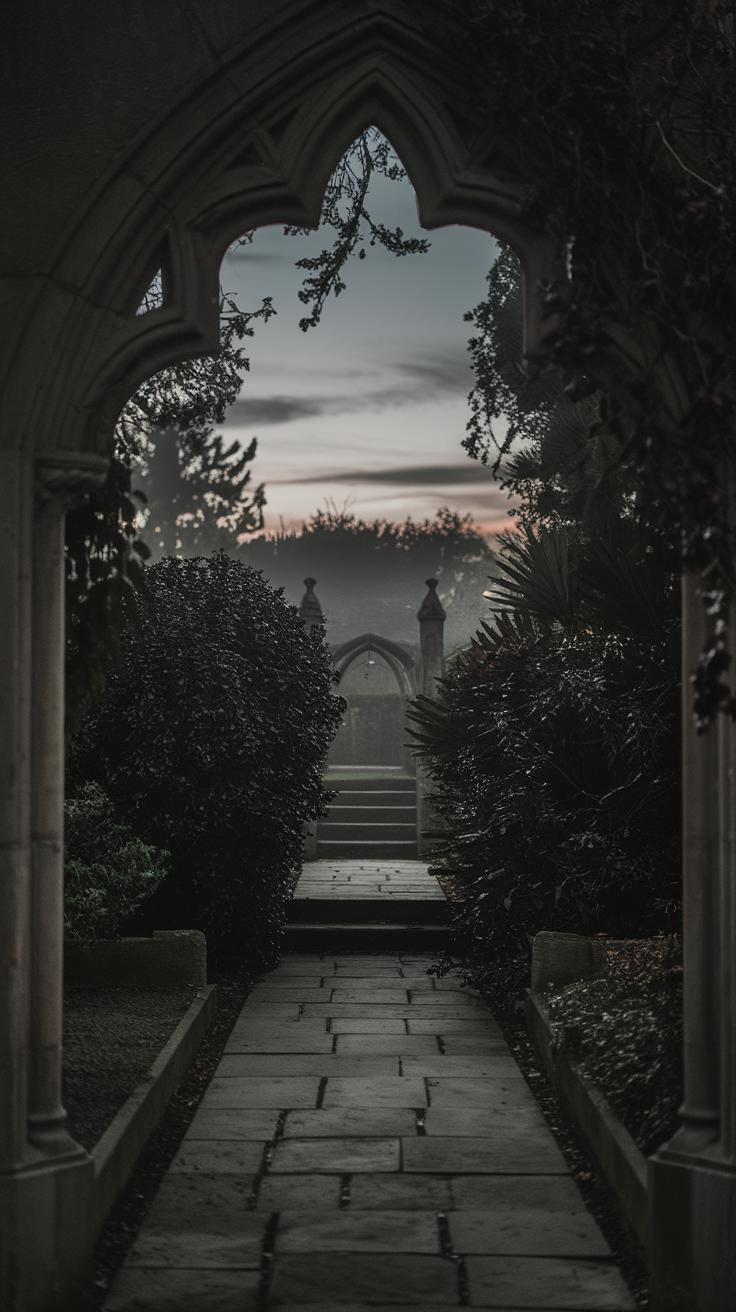
Characteristics of the Gothic Garden Aesthetic
The Gothic garden aesthetic immerses visitors in a world where nature and architecture intertwine to create a moody yet captivating atmosphere. Key features include towering, ornate structures like wrought-iron gates and stark stone walls that evoke a sense of ancient mystery. These architectural elements act as the bones of the garden, forming a haunting backdrop against which the vibrant, darkly romantic flora can flourish.
Complementary plant choices, often featuring rich, deep colors like burgundy, black, and midnight blue, play a crucial role in the ambiance. Shadows cast by twisted branches and climbing vines enhance the sense of enigma while providing a serene escape from the mundane world. Layouts are intentionally asymmetrical, guiding visitors through winding paths that encourage exploration and reflection, cultivating a hauntingly beautiful experience.
Choosing the Right Plants for a Gothic Garden Creating Enchanting Dark Romantic Vibes
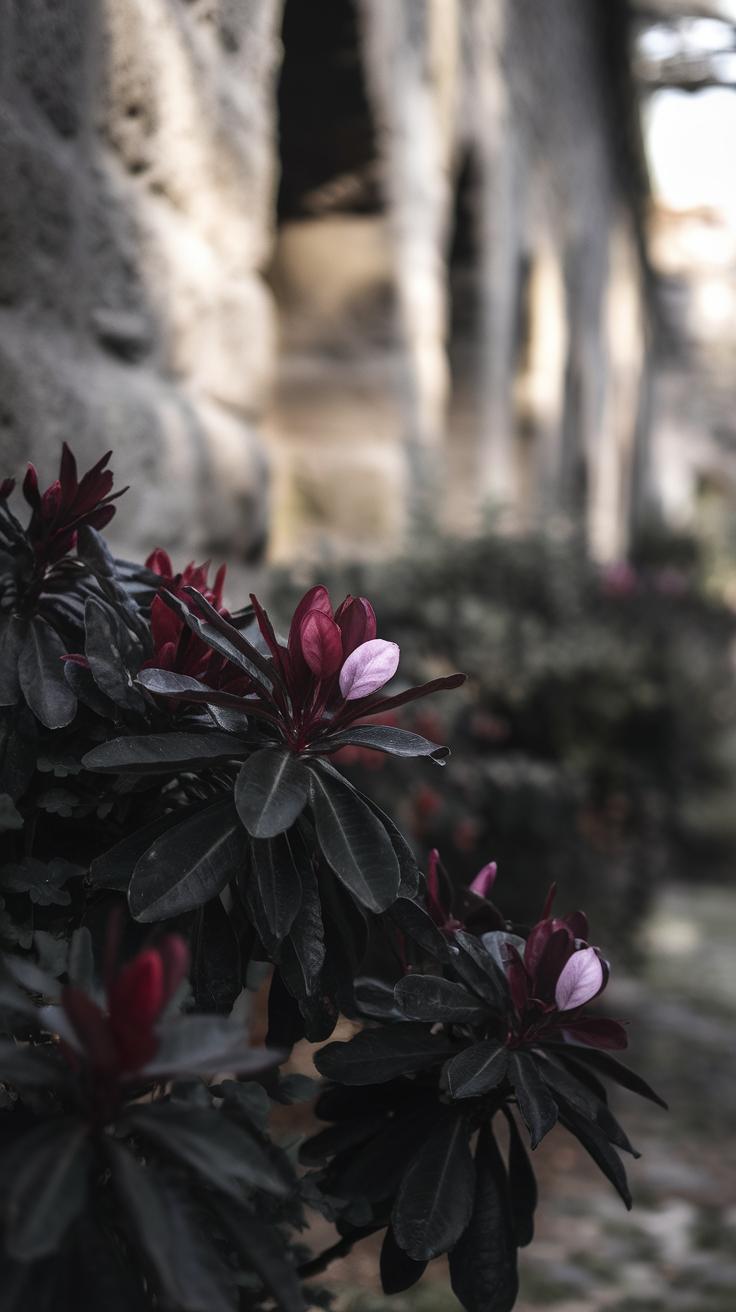
Key Plant Species for Atmospheric Depth
Curating the perfect plant selection is fundamental in establishing the essence of a Gothic garden. Emphasizing deep, rich colors will enhance the dark romantic ambiance of the space. Consider incorporating plants such as black basil, which not only introduces a powerful color but also adds aromatic intrigue. The striking contrast of dark purple dahlias and deep red roses encourages feelings of passionate melancholy, maintaining the haunted allure.
Textures play a vital role in creating a layered environment. Plants like laceleaf or the silver ragwort bring contrasting leaf shapes and silvery tones, accentuating the darker hues surrounding them. Ornamental grasses, such as black mondo grass, introduce movement while enhancing the garden’s eerie qualities.
Considerations for Plant Suitability
Selecting suitable plants means taking into account the climate and soil conditions of your garden. Many Gothic garden favorites, such as hemlock and smokebush, thrive in various conditions, offering resilience and longevity. In addition, their unique formations ensure that they stand out in the best light. Incorporating evergreens like yew adds structure and permanence, essential for maintaining that hauntingly beautiful atmosphere year-round. Careful planning of plant placement will ultimately help create an enchanting haven for tranquil reflection while preserving those dark romantic vibes.
Architectural Elements Enhancing the Gothic Garden with Dark Romantic Features
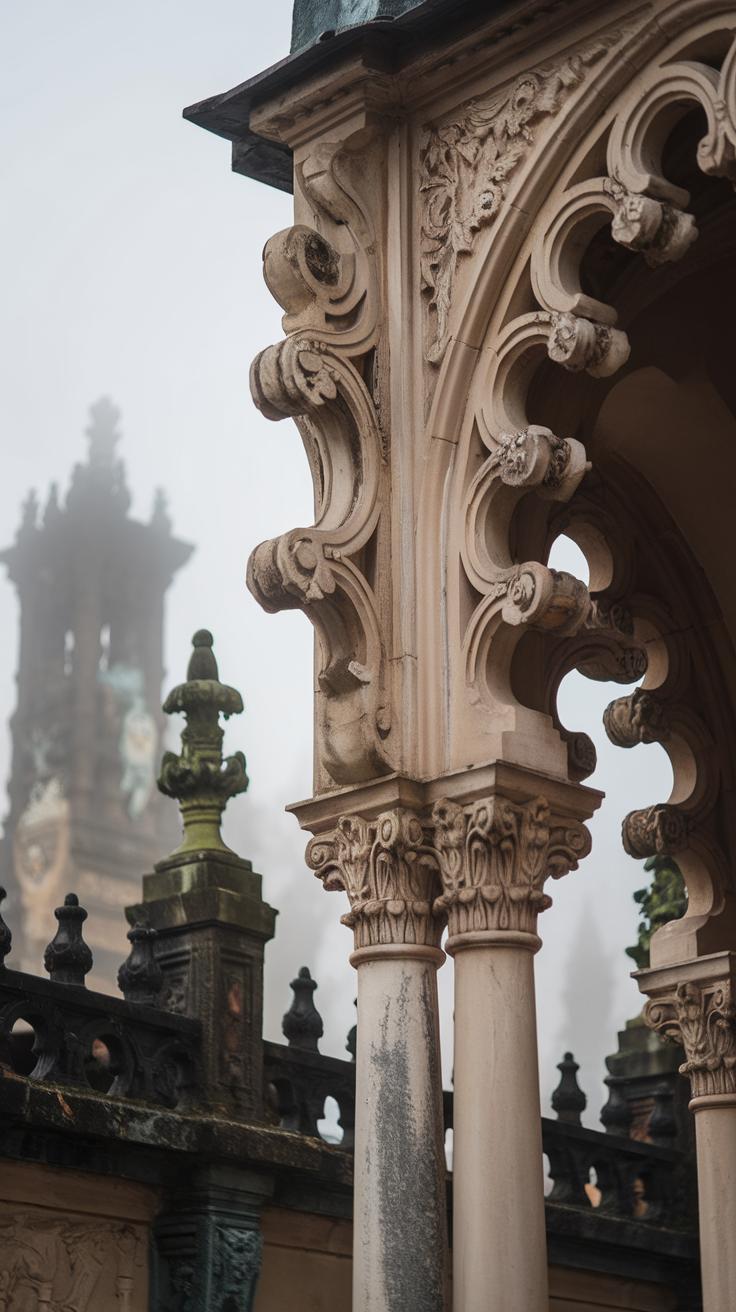
Arches and Trellises: Creating Enchanted Pathways
Incorporating arches and trellises into a Gothic garden adds structural depth and enhances its otherworldly charm. These elements, often made of wrought iron or weathered wood, can frame pathways and entrances, inviting visitors into a realm of mystery. Covered in climbing plants like wisteria or ivy, these structures can evoke an enchanting atmosphere, allowing the viewer to feel enveloped in nature’s embrace. The interplay of light and shadow through the latticework of a trellis adds to the garden’s ethereal quality, a perfect setting for quiet contemplation.
Stone Walls: A Timeless Barrier
Stone walls serve not only as physical boundaries but also as visual anchors that ground the dreamlike spaces within a Gothic garden. Weather-beaten stones, adorned with moss and climbing plants, create a sense of age and history, giving the garden an aura of narratives woven into its landscape. These walls offer privacy, fostering intimate areas for reflection while simultaneously holding shadows and secrets. Such architectural features create intriguing contrasts with softer plantings, enhancing the overall eerie allure that one seeks in this hauntingly beautiful garden.
Lighting in the Gothic Garden Enhancing Atmosphere with Natural and Artificial Sources
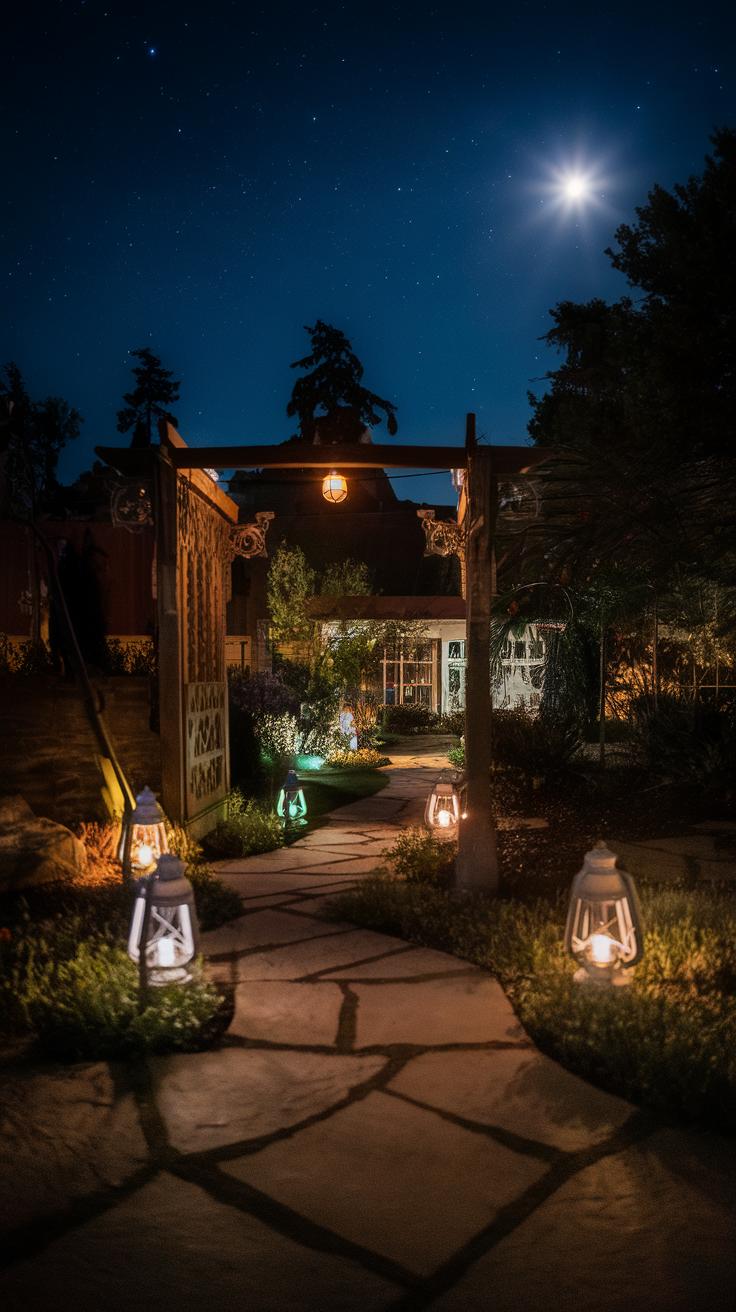
Natural Light’s Role in a Gothic Setting
Natural light plays a vital role in creating the enchanting atmosphere of a Gothic garden. The interplay of shadows cast by overhanging branches and dramatic architectural features imbues the space with mystery. During twilight hours, slanted sunlight filtering through dense foliage enhances the somber beauty inherent in the garden’s layout. Sunlight’s soft caress can accentuate the rich colors of dark blooms, originating from plants like black roses and deep purple tulips, inviting moments of quiet reflection. The use of natural landscapes, including hills and trees, enhances the transition of light throughout the day, creating a dynamic and ethereal environment.
Artificial Lighting for Haunting Allure
Artificial lighting contributes significantly to the somber appeal of a Gothic garden after dusk. Strategically placed lanterns, whether wrought iron or vintage-inspired, can evoke an old-world charm. Fairy lights draped over trellises or among climbing roses create a whimsical yet eerie glow, maintaining the garden’s dark romantic essence. Candles within ornate holders or scattered along pathways offer flickering illumination, enhancing the garden’s mystique. Spotlights aimed at architectural features, like stone walls or arches, can create dramatic silhouettes, further enhancing the haunting allure that makes a Gothic garden a uniquely enchanting space for contemplation and inspiration.
Designing with Water Features Elevate the Gothic Garden Ambiance
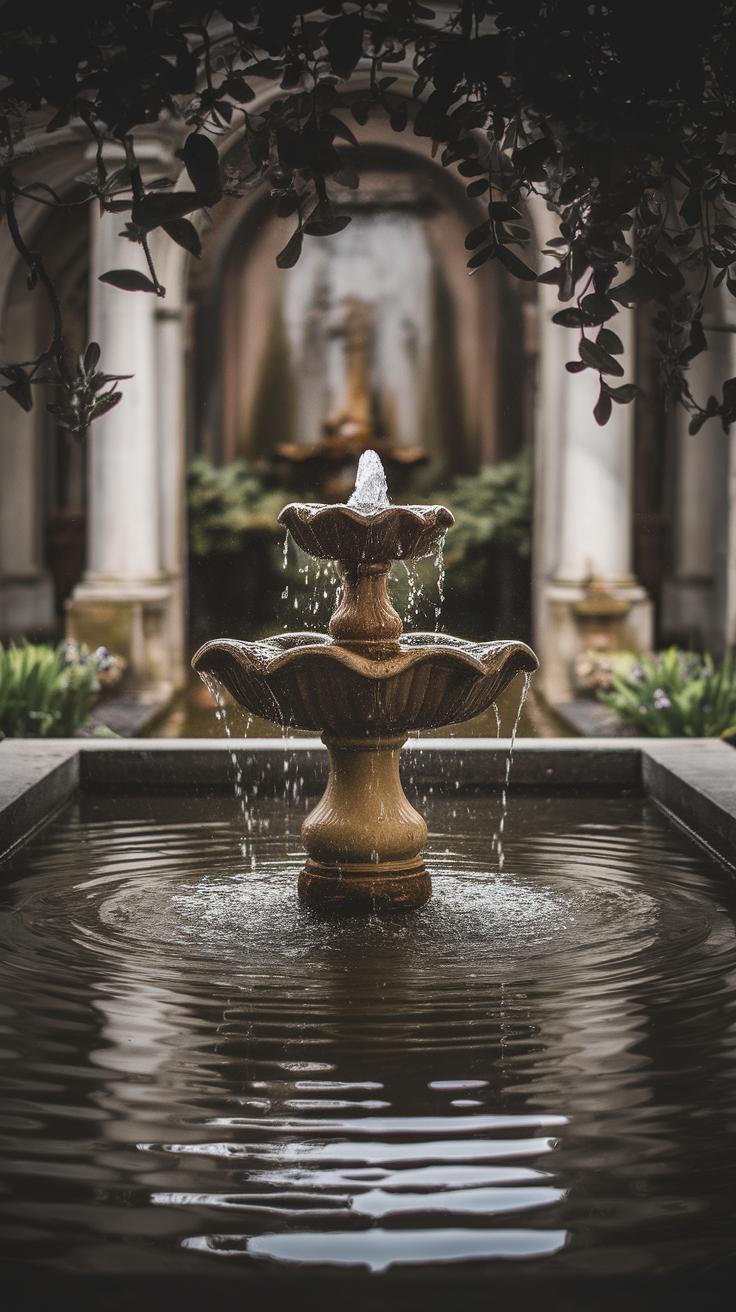
Enhancing Atmosphere with Water Elements
Integrating water features into a Gothic garden creates an enchanting interplay of sound and movement, further enriching its dark romantic essence. The tranquil murmur of a small pond can evoke a sense of serenity, drawing visitors into a realm of peaceful contemplation. Incorporating features like fountains, which can spray mist into the air, adds a layer of mystique, transforming the garden into a haunting sanctuary. The reflection of moonlight on water surfaces amplifies the ethereal glow, bolstering the garden’s enchanting atmosphere.
Choosing the Right Water Features
When selecting water elements, consider ornate designs that reflect Gothic architecture, such as stone fountains adorned with mythical creatures. Ponds should be surrounded by dark, lush foliage that creates a stark contrast, enhancing the sense of privacy and seclusion. Lighting cleverly positioned around these features can illuminate the water’s surface, producing captivating reflections that join the overall aesthetic. These elements not only contribute to visual interest but also attract wildlife, further enhancing the garden’s eerie allure.
Creating Textures and Layers Enhancing the Gothic Garden Experience
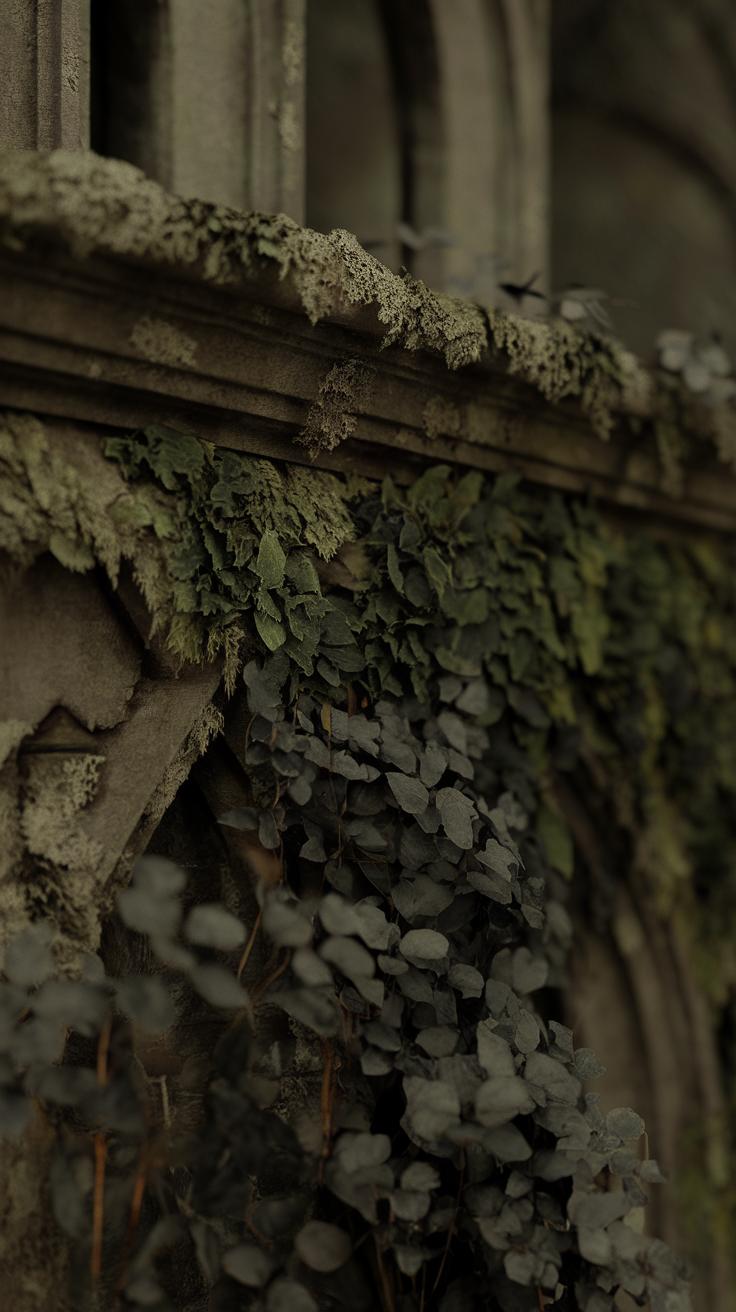
Importance of Textural Diversity in Gothic Gardens
Textures serve as the tactile and visual foundation of a Gothic garden, enriching its aesthetic and evoking a sense of depth. A well-curated interplay of soft and jagged surfaces can heighten the garden’s dark romantic atmosphere. Incorporating elements like weathered stone pathways, soft moss, and thorny rose bushes can create a contrast that mesmerizes the senses. The interplay between smooth foliage and rough-hewn structures invites exploration, encouraging deeper contemplation in this haunting enclave.
Layering is equally significant; combining various heights and forms adds a three-dimensional quality that entices the eye. Consider integrating towering Gothic arches alongside low-growing, delicate ground covers. Such deliberate placement not only frames the garden but also fosters an inviting yet eerie allure, reinforcing the themes of mystery and reflection. This rich tapestry of textural elements captivates visitors and transforms the Gothic garden into a sanctuary for the senses.
Curating a Sense of Mystery Evoking Intrigue in Your Gothic Garden
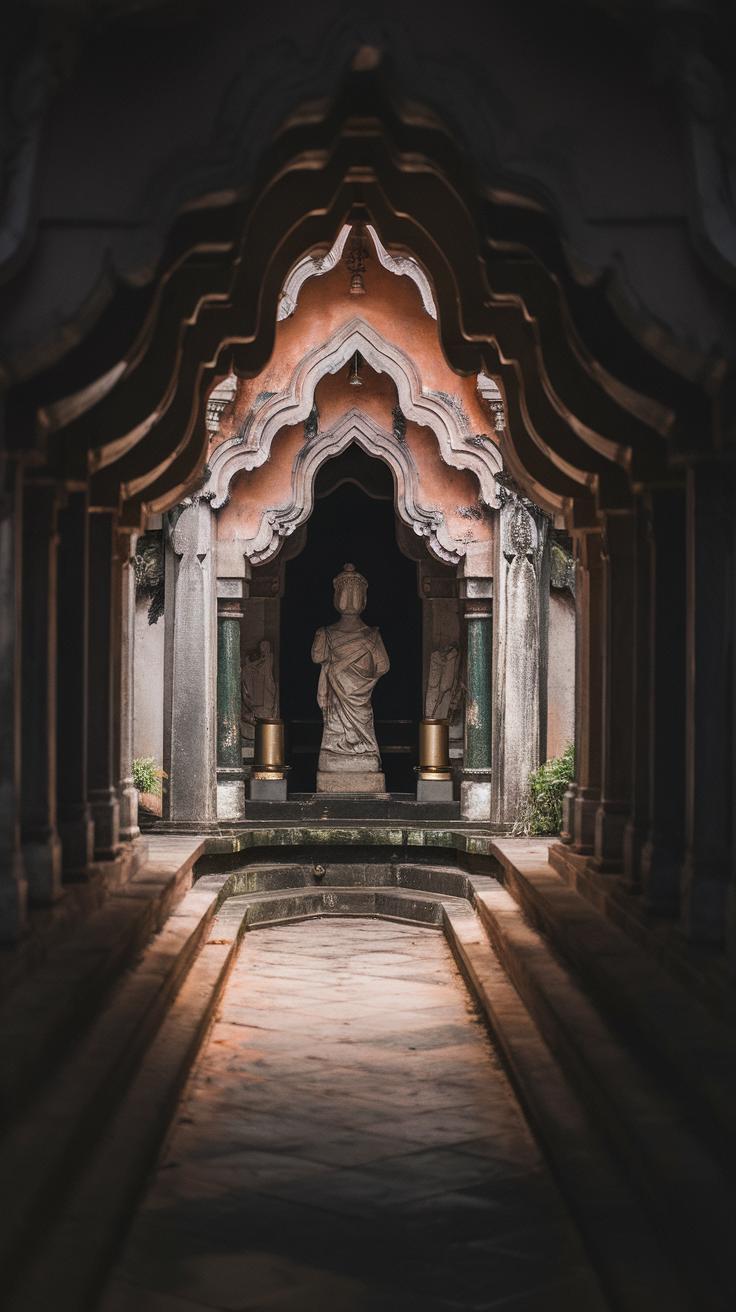
Creating a Gothic garden that embodies intrigue requires strategic design choices that invite exploration and contemplation. One effective method involves the use of shadowy elements, such as trellises draped with dark-hued climbing plants like clematis and ivy. These plants create intimate nooks, beckoning visitors to wander deeper into the enchanting spaces.
Water features, such as a gnarled fountain or a dark reflecting pool, enhance this atmosphere. The gentle sound of water trickling can evoke a sense of tranquility while also serving as a backdrop for moments of reflection. Incorporating aged statues or crumbling ruins further adds to the garden’s ghostly charm, creating focal points that spark curiosity.
Strategic lighting enhances the mysterious aura during twilight hours. Placing lanterns amidst dense foliage or using flickering candles can cast dancing shadows, transforming ordinary pathways into ethereal trails. By weaving these elements together, the garden becomes a hauntingly beautiful sanctuary, compelling visitors to delve into its whispered secrets.
Maintenance of a Gothic Garden Practical Tips for Enchanted Spaces
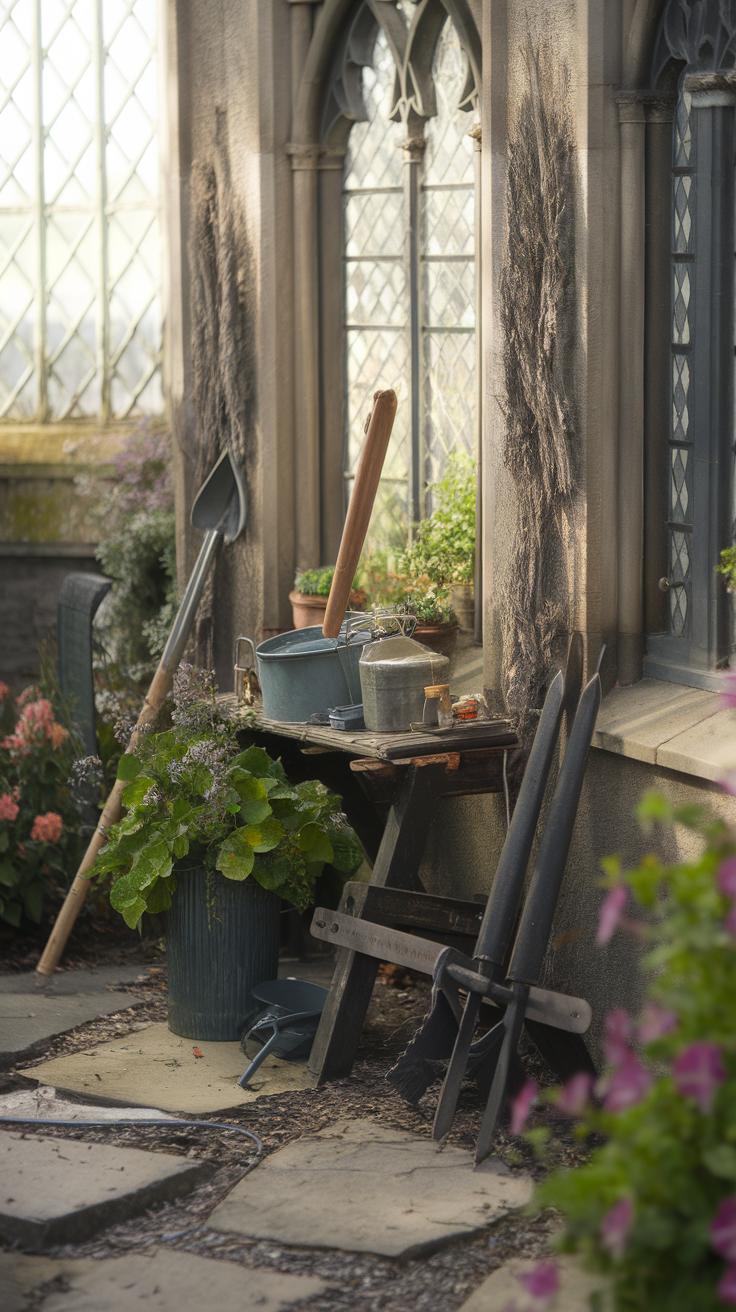
Preserving the Beauty of Gothic Elements
Maintaining the aesthetic appeal of a Gothic garden involves a delicate balance between nature and the supernatural. Regular pruning of overgrown shrubs and trees contributes to the garden’s enigmatic architecture, ensuring that gothic lines remain pronounced. Seasonal planting is vital; choose dark-hued flowers such as black petunias or deep purple dahlias to keep the garden blooming with the right ambiance. Soil health matters greatly; consider enriching it with organic compost, promoting healthy growth while evoking an earthy essence.
Creating a Mystical Atmosphere
Integrating elements such as stone pathways can enhance the ethereal charm of the space. These paths not only guide visitors through the garden but also accentuate its mysterious quality. Regularly check for weeds, as they can disrupt the dark allure of your chosen plants and create an unkempt appearance. Maintenance of any structural elements, such as wrought iron gates or vintage garden furniture, ensures their presence continues to evoke a sense of history and mystery, further immersing the visitor in a tranquil yet eerie atmosphere.
Drawing Inspiration from Gothic Literature and Art
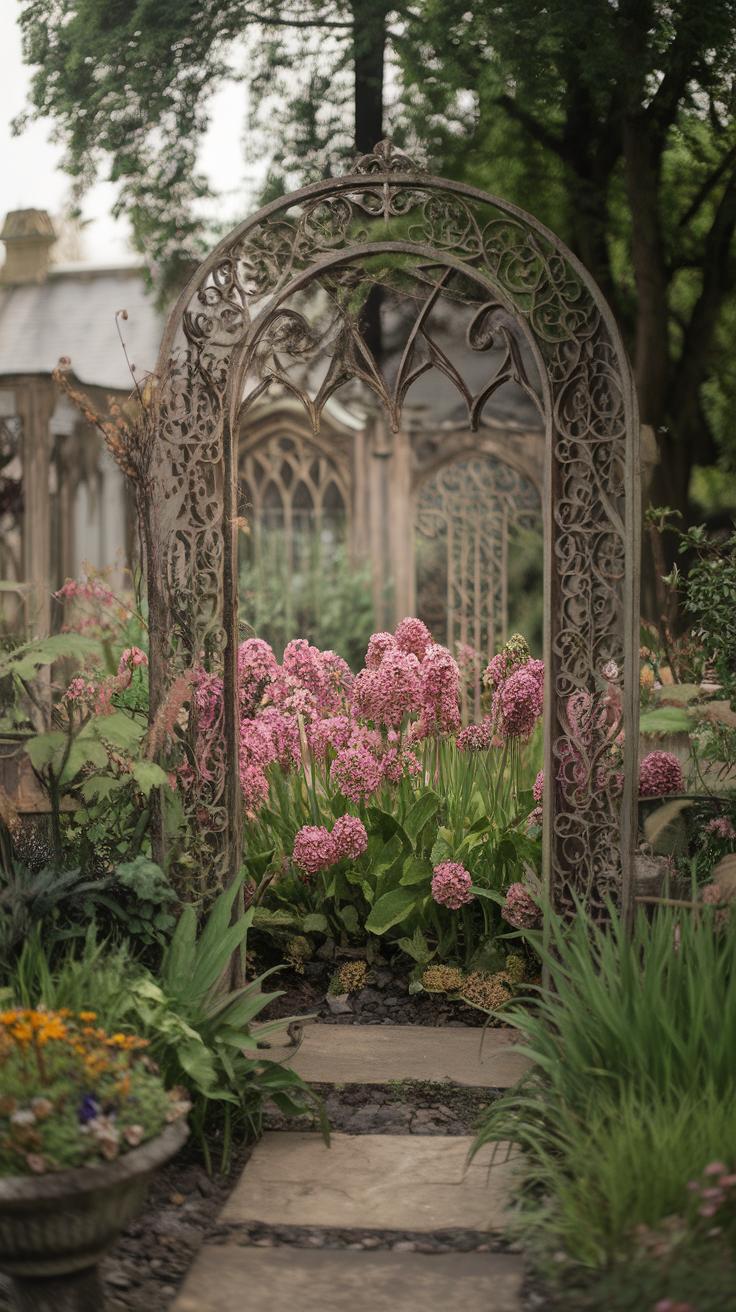
The Haunting Influence on Design
Gothic literature and art serve as profound sources of inspiration, weaving a tapestry of mystery and allure that can transform a garden into a dark romantic haven. Authors like Edgar Allan Poe and Mary Shelley depicted landscapes fraught with emotional intensity and atmospheric depth, mirroring the essence of a Gothic garden. Elements such as shadowy corners, overgrown plants, and decaying arches echo the melancholic beauty found in their works. Infusing these artistic themes into garden design encourages a feeling of intimacy, evoking dramatic narratives that resonate with those who wander through this enchanting space.
Artistic Expression in Natural Elements
Visual art from the Gothic period, characterized by intricate details and haunting imagery, also inspires garden aesthetics. Sculptures resembling gargoyles or ethereal figures can lend an enchanting quality to the space. The interplay of light and shadow, emphasized by strategically placed trees and plants, creates a mesmerizing ambiance reminiscent of chiaroscuro techniques. Incorporating these artistic expressions allows a garden to become a living canvas, encouraging tranquil reflection while embodying an eerie allure that invites contemplation of life’s deeper mysteries.
The Personal Touch in Gothic Gardens Infusing Dark Romantic Stories into Design
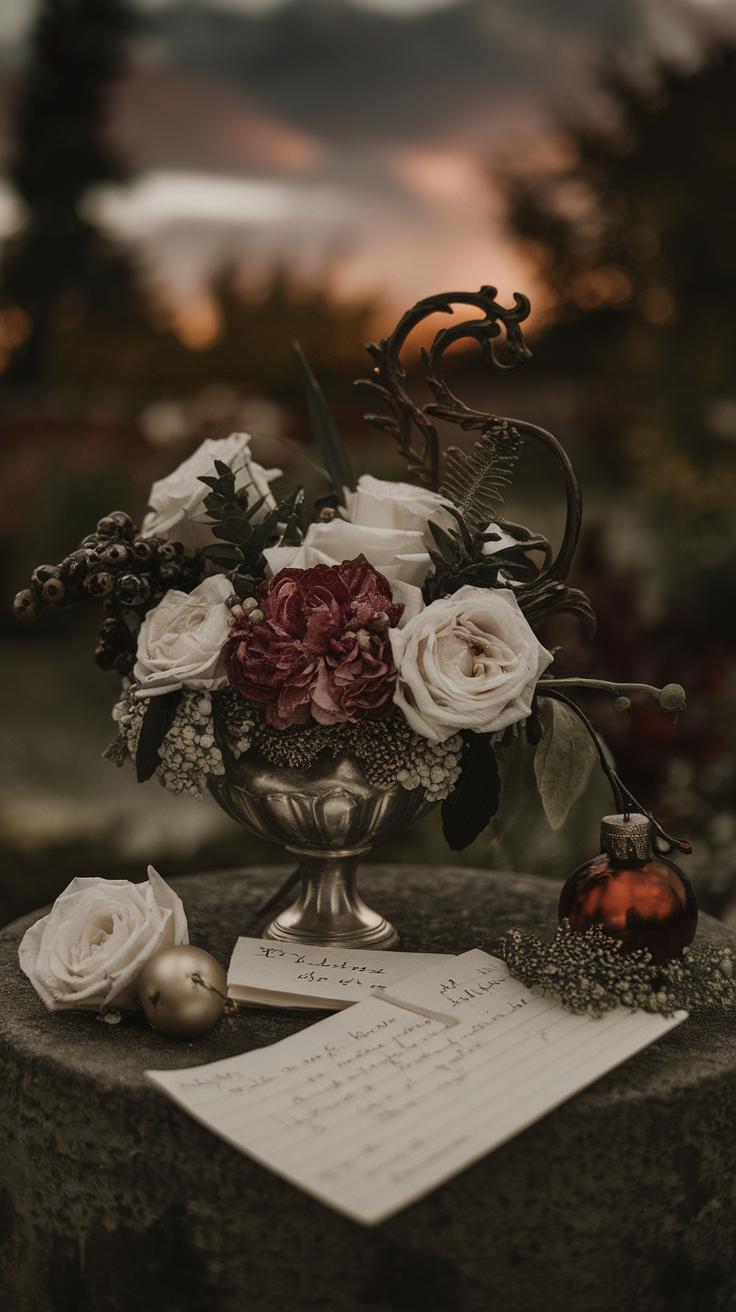
Creating a Gothic garden invites a profound connection to personal narratives and emotions, allowing the garden to evolve into a sanctuary of individual expression. Relating elements of your own story can transform mundane plants into symbols of cherished memories. For instance, planting a lilac can evoke a sense of nostalgia, reminiscent of evenings spent gazing at the stars with a loved one.
Consider setting up an altar or a designated space that reflects significant chapters of your life, perhaps incorporating mementos or stones adorned with inscriptions. Every element, from wrought iron trellises to the colors of the foliage, can embody aspects of your journey, crafting an enchanting landscape that resonates with your essence.
As you shape your Gothic garden, infuse it with your own themes—perhaps shadows of lost love, longing for the past, or the embrace of solitude. Such personal inflections breathe life into every corner, ensuring your garden resonates with haunting beauty and deep emotional resonance, allowing for tranquil reflection amid its eerie allure.
Conclusions
Creating an enchanting Gothic garden serves as an artistic expression of the interplay between darkness and light. By carefully selecting elements such as deep-hued plants, intricate stone structures, and shadowy corners, one can cultivate a space that fully embodies the essence of a Gothic aesthetic. This garden is not merely about beauty; it is a sanctuary for reflection, inviting individuals to explore their emotions and the narratives that unfold within its boundaries. The significance of a Gothic garden extends beyond its visual appeal, acting as a canvas for the soul’s journey.
The construction of a Gothic garden can be a transformative process, allowing for creativity and deep personal connection with nature. This journey through elements of Gothic design and landscaping opens the door to crafting personal environments that resonate with the heart’s dark romance. Whether seeking peaceful solitude or inspiration, a Gothic garden offers both mystery and comfort, ensuring its place as a favored retreat for lovers of the unusual and the beautiful alike.


